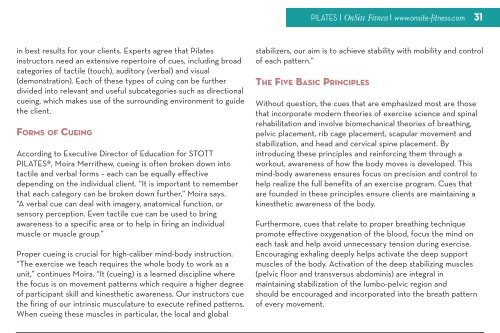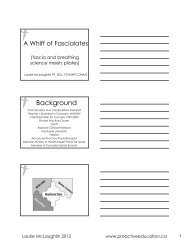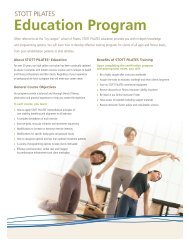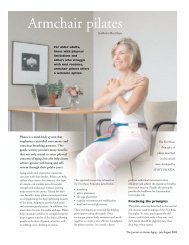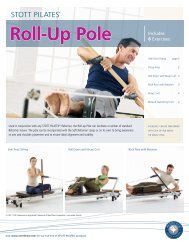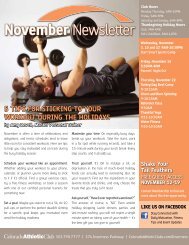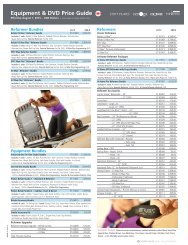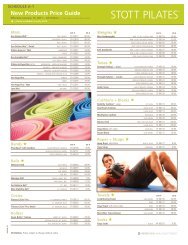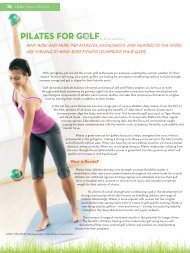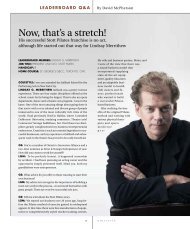CUEING FOR PILATES - Merrithew.com
CUEING FOR PILATES - Merrithew.com
CUEING FOR PILATES - Merrithew.com
You also want an ePaper? Increase the reach of your titles
YUMPU automatically turns print PDFs into web optimized ePapers that Google loves.
<strong>PILATES</strong> | OnSite Fitness | www.onsite-fitness.<strong>com</strong> 31<br />
in best results for your clients. Experts agree that Pilates<br />
instructors need an extensive repertoire of cues, including broad<br />
categories of tactile (touch), auditory (verbal) and visual<br />
(demonstration). Each of these types of cuing can be further<br />
divided into relevant and useful subcategories such as directional<br />
cueing, which makes use of the surrounding environment to guide<br />
the client.<br />
<strong>FOR</strong>MS OF <strong>CUEING</strong><br />
According to Executive Director of Education for STOTT<br />
<strong>PILATES</strong>®, Moira <strong>Merrithew</strong>, cueing is often broken down into<br />
tactile and verbal forms – each can be equally effective<br />
depending on the individual client. “It is important to remember<br />
that each category can be broken down further,” Moira says.<br />
“A verbal cue can deal with imagery, anatomical function, or<br />
sensory perception. Even tactile cue can be used to bring<br />
awareness to a specific area or to help in firing an individual<br />
muscle or muscle group.”<br />
Proper cueing is crucial for high-caliber mind-body instruction.<br />
“The exercise we teach requires the whole body to work as a<br />
unit,” continues Moira. “It (cueing) is a learned discipline where<br />
the focus is on movement patterns which require a higher degree<br />
of participant skill and kinesthetic awareness. Our instructors cue<br />
the firing of our intrinsic musculature to execute refined patterns.<br />
When cueing these muscles in particular, the local and global<br />
stabilizers, our aim is to achieve stability with mobility and control<br />
of each pattern.”<br />
THE FIVE BASIC PRINCIPLES<br />
Without question, the cues that are emphasized most are those<br />
that incorporate modern theories of exercise science and spinal<br />
rehabilitation and involve biomechanical theories of breathing,<br />
pelvic placement, rib cage placement, scapular movement and<br />
stabilization, and head and cervical spine placement. By<br />
introducing these principles and reinforcing them through a<br />
workout, awareness of how the body moves is developed. This<br />
mind-body awareness ensures focus on precision and control to<br />
help realize the full benefits of an exercise program. Cues that<br />
are founded in these principles ensure clients are maintaining a<br />
kinesthetic awareness of the body.<br />
Furthermore, cues that relate to proper breathing technique<br />
promote effective oxygenation of the blood, focus the mind on<br />
each task and help avoid unnecessary tension during exercise.<br />
Encouraging exhaling deeply helps activate the deep support<br />
muscles of the body. Activation of the deep stabilizing muscles<br />
(pelvic floor and transversus abdominis) are integral in<br />
maintaining stabilization of the lumbo-pelvic region and<br />
should be encouraged and incorporated into the breath pattern<br />
of every movement.


